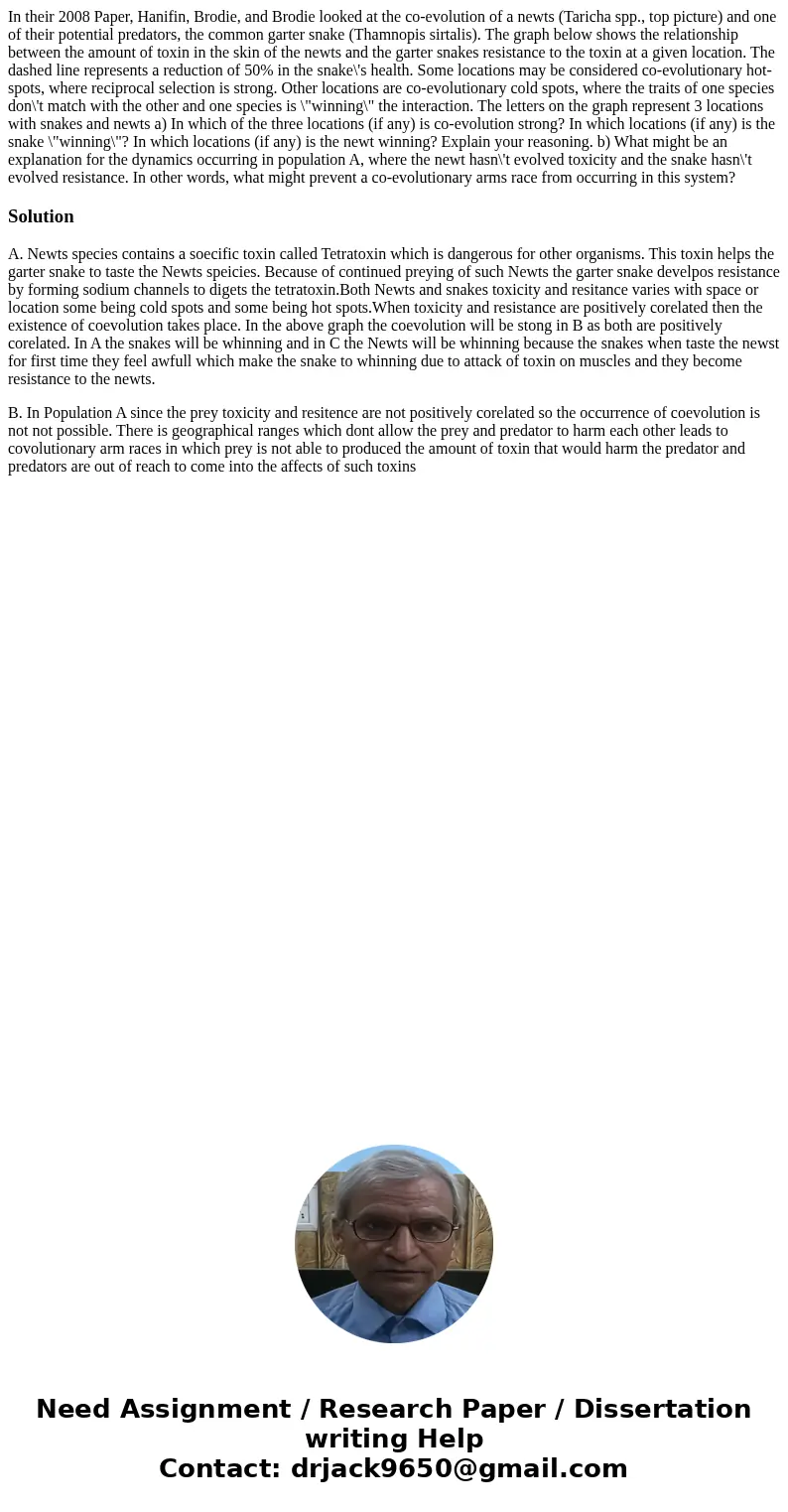In their 2008 Paper Hanifin Brodie and Brodie looked at the
Solution
A. Newts species contains a soecific toxin called Tetratoxin which is dangerous for other organisms. This toxin helps the garter snake to taste the Newts speicies. Because of continued preying of such Newts the garter snake develpos resistance by forming sodium channels to digets the tetratoxin.Both Newts and snakes toxicity and resitance varies with space or location some being cold spots and some being hot spots.When toxicity and resistance are positively corelated then the existence of coevolution takes place. In the above graph the coevolution will be stong in B as both are positively corelated. In A the snakes will be whinning and in C the Newts will be whinning because the snakes when taste the newst for first time they feel awfull which make the snake to whinning due to attack of toxin on muscles and they become resistance to the newts.
B. In Population A since the prey toxicity and resitence are not positively corelated so the occurrence of coevolution is not not possible. There is geographical ranges which dont allow the prey and predator to harm each other leads to covolutionary arm races in which prey is not able to produced the amount of toxin that would harm the predator and predators are out of reach to come into the affects of such toxins

 Homework Sourse
Homework Sourse